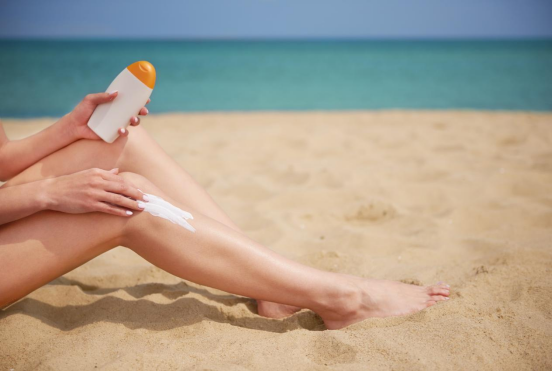The Power of Physical Sun Block: A Deep Study Its Star Contents

As consumers come to be progressively wise regarding skin care, the dispute between chemical and physical sunscreens remains to be a hot subject. While both deal crucial defense against the sunlight's hazardous ultraviolet (UV) rays, physical sunscreens are often lauded for their mild yet effective formula, making them a preferred choice for those with sensitive or reactive skin. The secret to their success depends on their active ingredients, which produce a physical obstacle on the skin to shut out UV radiation. This write-up will certainly explore the globe of physical sun blocks, focusing on their essential ingredients: zinc oxide and titanium dioxide.
Unlike their chemical equivalents, which soak up UV radiation and transform it into warmth, physical sunscreens function by sitting on top of the skin to form a guard that deflects and spreads both UVA and UVB rays. This system is why they are typically described as "sunscreens." The main benefit of this method is its instant effectiveness upon application and the reduced possibility of triggering skin irritation, as the ingredients are not absorbed right into the skin.
One of the most celebrated component in the physical sun block household is Zinc Oxide. This giant mineral is unique in its capacity to give broad-spectrum security, meaning it effectively protects the skin versus the complete range of UVA and UVB rays. UVA rays are in charge of early aging, including wrinkles and fine lines, while UVB rays are the key source of sunburn. By offering thorough defense against both, zinc oxide plays a critical duty in stopping sun damage and minimizing the threat of skin cancer cells.
Additionally, zinc oxide is renowned for its calming residential or commercial properties. It has been utilized for centuries to treat minor skin irritations, rashes, and burns, a testament to its gentle nature. This makes sunscreens formulated with zinc oxide a perfect selection for individuals with sensitive skin, acne-prone skin, or problems like rosacea and dermatitis. Its non-comedogenic properties additionally mean it is less likely to clog pores, an usual worry for those with oily or mix skin.
The various other key player in the physical sun block group is Titanium Dioxide. This normally occurring mineral is another superb ingredient for developing a physical barrier versus UV rays. It is very efficient at showing and spreading UVB radiation, giving robust security versus sunburn. While it provides excellent protection throughout the UVB range, it is generally considered much less efficient versus long-wave UVA rays compared to zinc oxide.
Consequently, titanium dioxide is typically used combined with zinc oxide in sunscreen formulas. This mix develops a collaborating impact, enhancing the general broad-spectrum protection of the product. By leveraging the strengths of both ingredients, formulators can create a sun block that offers extensive and trusted protection versus the sunlight's damaging rays. Like zinc oxide, titanium dioxide is additionally gentle on the skin and is an appropriate choice for those with sensitive or conveniently aggravated skin.
Recently, improvements in formula innovation have addressed among the initial disadvantages of physical sun blocks: the thick, white actors they would often leave on the skin. Modern formulations now use pulverized or nano-sized bits of zinc oxide and titanium dioxide, which allows for an extra cosmetically sophisticated application without jeopardizing their protective abilities. This indicates you can appreciate the mild, reliable protection of a physical sun block without the tell-tale white residue.
Finally, physical sun blocks offer a reliable and mild way to shield your skin from the sun. Their star components, zinc oxide and titanium dioxide, work in harmony to produce a physical shield that disperses damaging UVA and UVB rays. With their superb safety account and viability for all skin types, particularly delicate skin, physical sunscreens are a powerful force in the battle versus sunlight physical sunscreen ingredients damages. The next time you are Search the sunscreen aisle, consider the effective, protective, and skin-loving benefits of a physical solution.